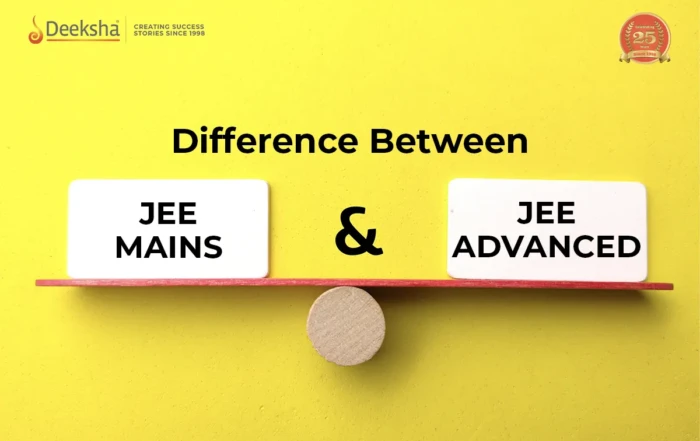Introduction
Dispersion is a phenomenon in which white light separates into its constituent colors when it passes through a medium like a glass prism. This separation occurs due to different degrees of refraction experienced by various wavelengths of light. Dispersion explains why we see a spectrum of colors when white light interacts with a prism or other refractive surfaces.
The ability to split white light into its component colors is fundamental to understanding the behavior of light, the nature of colors, and many optical phenomena, such as rainbows.
What is Dispersion of Light?
Dispersion is defined as the process by which white light is separated into its constituent colors when it passes through a prism. The splitting occurs because each color of light bends (refracts) by a different amount as it travels through the prism. The wavelength and speed of each color determine how much it bends, with shorter wavelengths bending more than longer wavelengths.
Understanding White Light:
- White light is composed of seven distinct colors: Violet, Indigo, Blue, Green, Yellow, Orange, and Red (often remembered by the acronym VIBGYOR).
- Although we perceive sunlight or light from bulbs as white, it is a combination of multiple wavelengths, each corresponding to a different color in the visible spectrum.
Key Characteristics of Dispersion:
- Dispersion occurs due to differences in refractive indices for each wavelength.
- The shorter the wavelength, the more the light bends as it passes through the prism.
- Violet light, which has the shortest wavelength, bends the most, while red light, with the longest wavelength, bends the least.
How Dispersion Occurs in a Glass Prism
A glass prism is a transparent optical element with two triangular refracting surfaces inclined at an angle to each other. When a beam of white light enters a prism, it refracts at the air-glass boundary, slows down, and bends toward the normal due to the change in medium (air to glass). Upon exiting the prism, the light refracts again as it moves from the glass (denser medium) to the air (rarer medium). However, each color bends by a different amount, leading to the separation of colors.
Step-by-Step Process of Dispersion:
- Incident Ray: A beam of white light strikes the first surface of the prism.
- Refraction at the First Surface: As light enters the denser medium (glass), it slows down and bends toward the normal. Since the refractive index of glass is different for each wavelength, different colors of light bend by different amounts.
- Refraction at the Second Surface: When the light emerges from the prism, it bends away from the normal as it exits from a denser medium (glass) into a rarer medium (air). Each color exits the prism at a different angle.
- Formation of Spectrum: The outgoing rays of light spread out to form a spectrum of colors.
The final result is the separation of white light into a band of colors, with violet at one end (bending the most) and red at the other (bending the least).
Diagram of Dispersion:

Why Does Dispersion Occur?
Dispersion occurs because the refractive index of a material (like glass) varies for different wavelengths of light. Shorter wavelengths experience a higher refractive index, causing them to bend more. This variation in refraction results in the splitting of white light into its constituent colors.
Wavelength, Refractive Index, and Speed of Light:
- Speed of Light in a Medium: The speed of light decreases when it enters a denser medium like glass. However, this decrease is not the same for all colors. Violet light slows down more than red light.
- Refractive Index: The refractive index of a material measures how much the speed of light is reduced inside the material. A higher refractive index means that light will bend more. For example, the refractive index of glass for violet light is higher than that for red light.
Relation Between Refractive Index and Wavelength:
Where:
= Refractive index,
= Speed of light in a vacuum, (
)
= Speed of light in the medium.
Since each wavelength (color) travels at a different speed through the prism, their refractive indices are different, leading to varying degrees of bending and the separation of light.
The Colors of the Spectrum (VIBGYOR)
When white light disperses through a prism, it splits into its constituent colors, forming the visible spectrum known as VIBGYOR. Each color corresponds to a specific wavelength in the visible spectrum:
- Violet: Shortest wavelength (around 400 nm); bends the most.
- Indigo: Slightly longer wavelength than violet.
- Blue: Bends less than violet and indigo but still experiences significant refraction.
- Green: Medium wavelength; experiences moderate refraction.
- Yellow: Longer wavelength than green.
- Orange: Bends less than yellow.
- Red: Longest wavelength (around 700 nm); bends the least.
Why These Colors Appear in This Order:
- Violet bends the most because it has the shortest wavelength and the highest refractive index.
- Red bends the least because it has the longest wavelength and the lowest refractive index.
This is why the colors always appear in the same order (VIBGYOR) when white light is dispersed by a prism.
Factors Affecting Dispersion
Several factors influence the degree of dispersion when light passes through a prism:
1. Wavelength of Light:
The amount of bending depends on the wavelength of light. Shorter wavelengths (like violet) are refracted more, while longer wavelengths (like red) are refracted less.
2. Refractive Index of the Prism:
The refractive index of the prism material determines how much the light bends as it passes through the prism. A higher refractive index means greater dispersion. Different materials (like water, glass, or diamond) will disperse light differently.
3. Angle of the Prism (Apex Angle):
The apex angle of the prism is the angle between the two refracting surfaces. A larger apex angle increases the deviation and separation between colors, leading to more pronounced dispersion.
4. Angle of Incidence:
The angle at which light enters the prism also affects the dispersion. If the angle of incidence is too small or too large, the degree of refraction and dispersion may change.
Applications of Dispersion of Light
Dispersion of light has several practical and natural applications. Some key applications include:
1. Rainbow Formation:
A rainbow is a natural example of dispersion. When sunlight passes through tiny droplets of water in the atmosphere, the light undergoes refraction, dispersion, and reflection within the droplet. This results in the formation of a rainbow, where sunlight is spread out into a spectrum of colors. The water droplets act like tiny prisms, causing white light to split into its constituent colors.
2. Spectroscopy:
Spectroscopes use the principle of dispersion to analyze the composition of light emitted by different substances. A spectroscope contains a prism (or diffraction grating) that separates light into its component wavelengths. Scientists use this spectrum to identify the chemical composition of stars, gases, and other materials.
3. Optical Instruments:
Prisms are used in various optical instruments, such as binoculars and cameras, to manipulate light. Prisms in these devices can redirect, split, or disperse light to create clearer, more accurate images. Some cameras use prisms to enhance color separation in photographic sensors.
4. Achromatic Lenses:
While dispersion can cause chromatic aberration in lenses (where colors do not converge at the same focal point), achromatic lenses are designed to reduce this effect. Achromatic lenses are made of two or more lens elements with different refractive indices to minimize the separation of colors.
Real-Life Example: Chromatic Aberration
Chromatic aberration is a type of distortion in optical systems, such as cameras and telescopes, where different colors of light focus at different distances due to dispersion. This results in blurred images with colored fringes around objects. To minimize chromatic aberration, special lenses (achromatic or apochromatic lenses) are used, which combine materials with different refractive properties to counteract the dispersion of light.
Practice Questions with Answers
Q1: What is meant by dispersion of light? Why does it occur when white light passes through a glass prism?
- Answer: Dispersion is the process of splitting white light into its constituent colors when it passes through a prism. It occurs because each color in white light has a different wavelength and refractive index, causing them to bend by different amounts when they pass through the prism. Shorter wavelengths, like violet, bend more than longer wavelengths, like red.
Q2: Why does violet light bend more than red light in a glass prism?
- Answer: Violet light bends more than red light because it has a shorter wavelength and a higher refractive index. The shorter the wavelength, the more the light slows down in the prism, causing it to refract more than light with longer wavelengths, like red.
Q3: What are the factors that affect the dispersion of light in a prism?
- Answer: The factors that affect the dispersion of light in a prism include the wavelength of the light (shorter wavelengths bend more), the refractive index of the prism material (higher refractive index causes greater bending), the angle of the prism, and the angle of incidence.
Q4: How is the phenomenon of dispersion responsible for the formation of a rainbow?
- Answer: A rainbow is formed when sunlight passes through raindrops in the atmosphere. The raindrops act like tiny prisms, refracting and dispersing the sunlight into its constituent colors. The light is then internally reflected within the drop and refracted again as it exits, creating the spectrum of colors that we observe as a rainbow.
Q5: Can a second prism recombine the colors of the dispersed light into white light? Explain.
- Answer: Yes, a second prism can recombine the dispersed colors back into white light. If the second prism is placed in an inverted position relative to the first prism, it will reverse the dispersion, causing the colors to merge back into white light. This demonstrates that white light is composed of multiple colors.
FAQs
A spectroscope uses a prism (or a diffraction grating) to disperse light into its component wavelengths. By analyzing the resulting spectrum, scientists can identify the specific wavelengths of light emitted by a substance, helping to determine its composition.
Yes, dispersion can occur in any transparent medium with varying refractive indices for different wavelengths. Water droplets, for example, cause dispersion, which leads to the formation of rainbows. Diamond, with its high refractive index, also causes significant dispersion.
Different colors of light have different wavelengths and refractive indices. Shorter wavelengths, like violet, have a higher refractive index and bend more, while longer wavelengths, like red, have a lower refractive index and bend less.
The order of colors in the spectrum formed by a glass prism is Violet, Indigo, Blue, Green, Yellow, Orange, and Red (VIBGYOR). Violet light bends the most, and red light bends the least.
Related Topics
- List of Physics Scientists and Their Inventions
- Difference between AC and DC
- Faraday’s Law
- Wheatstone Bridge
- Work, Energy and Power
- Circuit Diagram
- Compound Microscope
- Reflection Of Light
- Defects Of Vision And Their Correction
- Laws of Motion
- Resistance Of A System Of Resistors
- What is Hypothesis?
- Electric Power
- Mirrors
- Magnetic Field Due To A Current – Carrying Conductor











Get Social